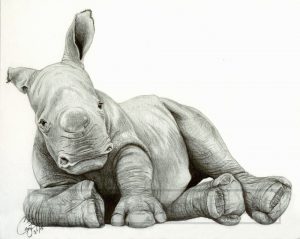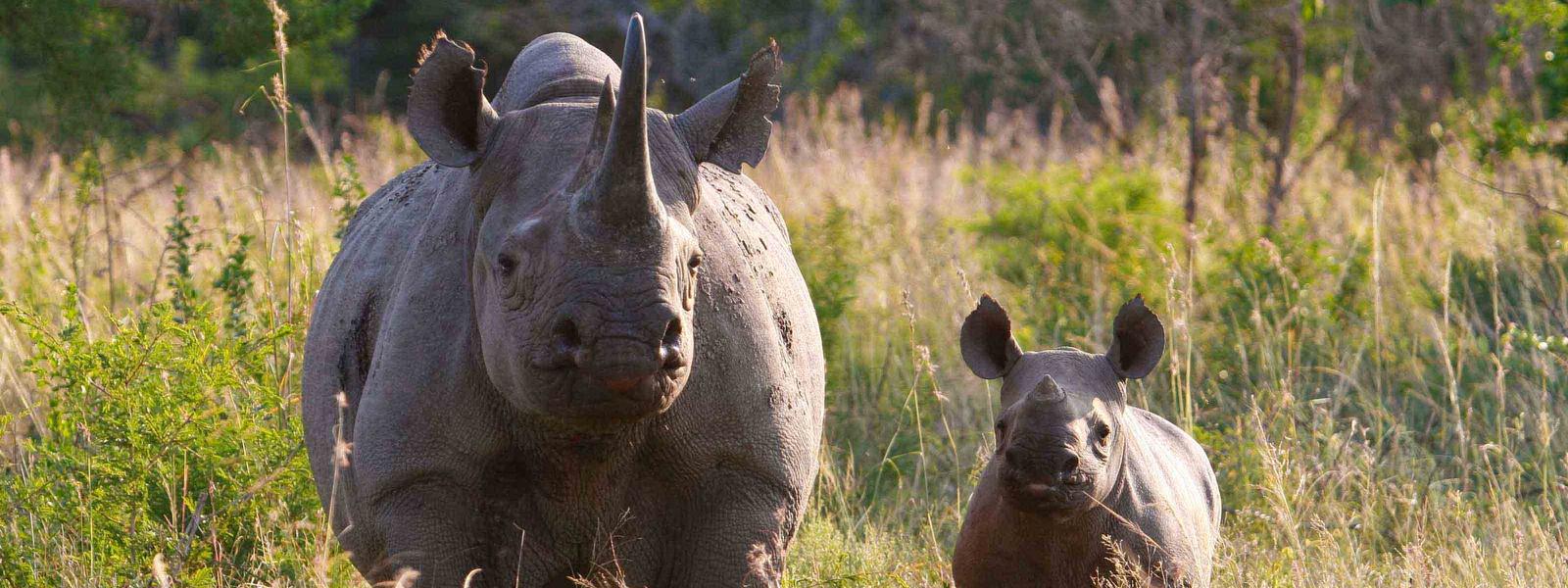The departure of Sudan; the last male Northern White Rhino (NWR) from the earth made the whole world shocked that the species have already got erased from the earth. But Sudan left his daughter, Najin (28 years), granddaughter, Fatu (17 years). He also left his genetic and semen samples which are now in cold storage. The hope on another calf-NWR could be kept only with the assisted-reproduction methods. Conservationists suggest two main processes to have a baby, carrying the genes of Sudan.
First is to do In-Vitro Fertilization (IVF) and stem cell procedures from the semen of Sudan and egg cells of one of the two female Rhinos. IUCN states that only Fatu is young out of the two living females, meaning that she is the one to use in reproduction attempts. If this attempt gets successful, a tube-NWR baby could be gained with pure NWR characters.
But it is recognized that rhinos have low rate of reproduction, in captivity. They rarely get conceived and majority get end up with miscarriages. ‘Acyclic and erratic luteal activity, mating, conception and pregnancy failures and reproductive ageing have been identified in female white rhinoceroses that have low rate of reproduction in captive populations’ (Patton ML, Swaisgood RR, Czekala NM, White AM, Fetter GA, Montagne JP, et al.) ‘Reduced semen quality could be a contributing factor for the low rate of reproduction in the captive white rhinoceroses’ (R. Hermes et al. /Theriogenology 63 (2005)). These factors show that Northern Whites need human aid to produce their young ones.
The issue with assisted-reproduction processes is that it costs a lot. ‘The estimated cost of IVF – from the development of the method to trials, implantation and the creation of a viable breeding herd of northern whites – could be as much as US$ 9 million.’ – Ol Pejeta Conservancy’s press
Second method suggested by conservationists is to interbreed Northern Whites with Southern Whites, who are the closest relatives, living in the southern region of the same continent. They are considered to belong to two different subspecies of the genus Ceratotherium. Presence of nearly 20,000 southern Whites will make the attempt to generate new offspring more convenient and reliable, as there is a low risk of maladapted mutations occurring when inbreeding is done between many individuals, with a large population. Bengal tigers (Panthera tigris tigris) breeding with Sumatrans (Panthera tigris sondaica) for conservation purposes, is one such example where two subspecies are interbred.
But this suggestion has an issue according to Groves who worked on taxonomic re-assessment of Northern White Rhinoceros. Earlier, both groups were considered to be two subspecies of a single species. It was Groves who put forward the argument in 2010 that they are two different species who parted from each other, million years back. ‘Dental morphology and cranial anatomy clearly diagnosed the southern and northern forms. The differentiation was well supported by dental metrics, cranial growth and craniometry, and corresponded with differences in post-cranial skeleton, external measurements and external features.’ (Groves CP, Fernando P, Robovsky ´ J (2010)).
But still this argument is not universally accepted. Somehow if Grove is correct, there will a doubt whether interbreeding between two species will produce offspring and whether they will be fertile. In the history, there has been successful interbreeding attempts which has produced fertile offspring. Production of fertile young ones by interbreeding polar bears (Ursus maritimus) and grizzly bears (Ursus arctos) is one such example. This shows that we can still have hopes on a baby-Rhino carrying Sudan’s genes.
 /div>
/div>Attempt of interbreeding with Southern Whites will at least preserve some NWR genes. It is better to rescue them at the brink of extinction, rather than letting them vanish. Northern White Rhinos, being the second largest mammals on earth, are already functionally extinct. Sudan’s survivors, his semen and stem cell samples are awaiting till we implement assisted-reproduction methods to produce a baby white-rhino.
References:
Patton ML, Swaisgood RR, Czekala NM, White AM, Fetter GA, Montagne JP, et al. Reproductive cycle length and pregnancy in the southern white rhinoceroses (Ceratotherium simum simum) as determined by fecal pregnane analysis and observations of mating behavior. Zoo Biol 1999; 18:111–27.
R. Hermes et al. /Theriogenology 63 (2005) Reproductive soundness of captive southern and northern white rhinoceroses (Ceratotherium simum simum, C.s. cottoni): evaluation of male genital tract morphology and semen quality before and after cryopreservation
Groves CP, Fernando P, Robovsky ´ J (2010). The Sixth Rhino: A Taxonomic Re-Assessment of the Critically Endangered Northern White Rhinoceros. PLoS ONE 5(4): e9703. doi:10.1371/journal.pone.0009703
https://thewire.in/environment
Image Courtesy:
https://goo.gl/C6K5nX
https://goo.gl/pzmPhP
https://goo.gl/HiX5eV


